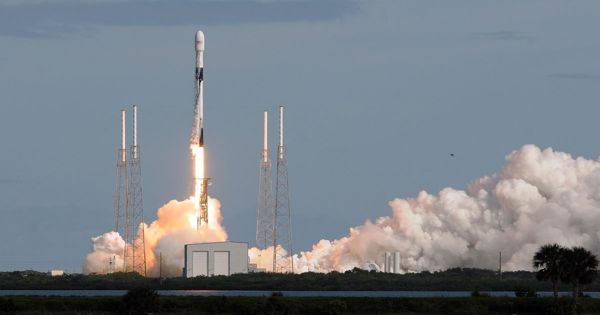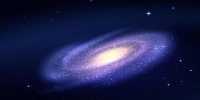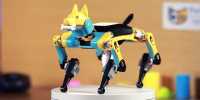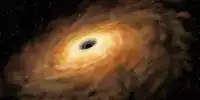A new study used a nuclear test monitoring system to track the infrared sound from 1,001 rocket launches, identifying the distinct sounds from seven different types of rockets. Researchers were also able to identify the various stages of the rockets’ journey in some cases, such as the Space Shuttle and the Falcon 9. After their initial blast, space rockets blast away from Earth with infrared rumbles, sound-waves too low to be heard by human ears but capable of traveling thousands of miles.
A new study used a nuclear test monitoring system to track the infrasound from 1,001 rocket launches. The study identified the distinct sounds of seven different types of rockets, including the Space Shuttle, Falcon 9 rockets, various Soyuz rockets, the European Space Agency’s Ariane 5, Russian Protons, and various types of Chinese Long March rockets.
Researchers were also able to identify the various stages of the rockets’ journey in some cases, such as the Space Shuttle and the Falcon 9. According to a new study published in Geophysical Research Letters, AGU’s journal for high-impact, short-format reports with immediate implications spanning all Earth and space sciences, the new information could be useful for finding problems and identifying the atmospheric re-entry or splashdown locations of rocket stages.
Infrasound refers to acoustic soundwaves that are below the general frequency threshold that humans can hear. However, while higher frequency noises, such as nuclear explosions, are louder close to the source, low-frequency infrared travels farther. Infrasound is produced by both natural and technological events, and it has been used to detect remote volcanic eruptions or the hum of ocean swells.
New research used a system for monitoring nuclear tests to track the infrasound from 1,001 rocket launches, identifying the distinctive sounds from seven different types of rockets.
The authors used a global monitoring network to listen in on rocket launches. Following the adoption of the Comprehensive Nuclear-Test-Ban Treaty by the United Nations General Assembly in 1996, scientists established the International Monitoring System (IMS). This system is currently distinguished by a network of 53 certified and operational infrasound stations located throughout the world. Micro barometers at IMS stations can detect infrared sound emitted by large nuclear explosions.
Infrared sounds emitted by other large explosions, such as volcanic eruptions or space rocket launches, are also collected by these stations. The researchers wanted to see if they could detect and characterize space rocket launches all over the world.
They looked at 7,637 infrared signatures recorded at IMS stations between 2009 and mid-2020, which included 1,001 rocket launches. According to author Patrick Hupe, a researcher at the German Federal Institute for Geosciences and Natural Resources, the team only examined rocket launches that occurred up to 5,000 kilometers from an IMS station, but the acoustic signals from rocket launches could sometimes be detected up to 9,000 kilometers away.
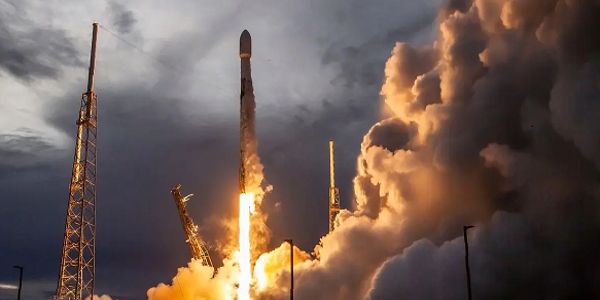
The researchers discovered infrared signatures for up to 73% of these rockets, or 733. The remaining 27% of launches were missed because the rockets had smaller thrusts or the atmospheric conditions did not favor long-distance propagation.
They were able to determine the type of rocket launched for those they did detect, which ranged from Space Shuttle, the last of which launched in 2011, to Russian Soyuz rockets. They examined the signatures of seven different rocket types in order to establish a link between measured amplitude and rocket thrust: Space Shuttle, Falcon 9 rockets, various Soyuz rockets, the European Space Agency’s Ariane 5 rocket, Russian Protons, Chinese Long March 2Cs, 2Ds, 3As, 4Bs, and 4Cs, and Long March 3Bs.
Space Shuttle vs Falcon 9
The researchers also examined two different rocket types: the Space Shuttle and the Falcon 9.
They discovered that they could identify the infrasonic signals of these rockets at various stages of flight. The team detected the infrasound created by the splash down of the fuel boosters before they detected the acoustic signal of the initial rocket launch for the first, a Space Shuttle launched from Kennedy Space Center in November 2009, because they dropped down closer to the infrasound station than the launch site. In other words, the rocket was faster than the speed of sound.
“The rocket was faster than the infrasound propagated through the atmosphere,” Hupe said.
They also investigated the launch and descent of SpaceX’s Falcon 9, which has a partially reusable rocket that reentered the atmosphere and successfully landed on a drone ship in the ocean in January 2020. Hupe’s team was able to detect both the rocket’s takeoff and the first booster’s landing.
“We were able to separate different rocket stages by processing the data and also applying different quality criteria to the infrasonic signatures,” Hupe explained.
“The ability to detect different types of rockets could be useful,” said Adrian Peter, a professor of computer engineering and sciences at the Florida Institute of Technology who was not involved in Hupe’s research but has previously studied rocket infrared signatures.
He believes that characterizing different stages of rocket launches could be useful in predicting future problems. For example, if a rocket fails to launch or explodes, researchers may be able to determine what went wrong by analyzing the infrared signature, especially if the data is correlated with sensor readings from the rockets themselves.
Peter adds that it’s great to see researchers making use of data gathered by a monitoring network that was originally designed to detect nuclear launches and explosions. “Now we’re leveraging it for other scientific applications,” he said, adding that this type of data has likely other applications.
